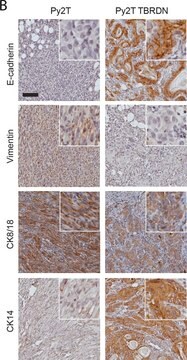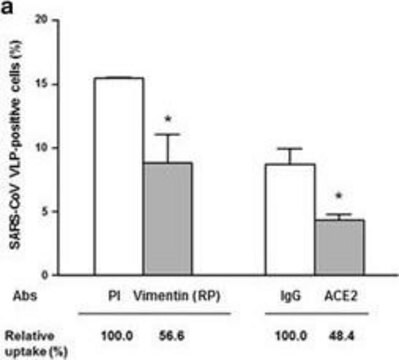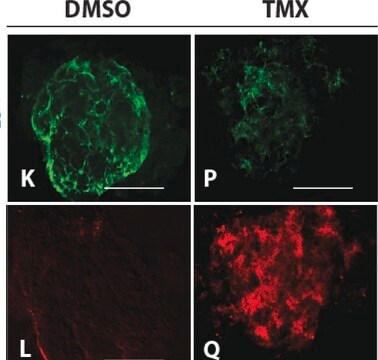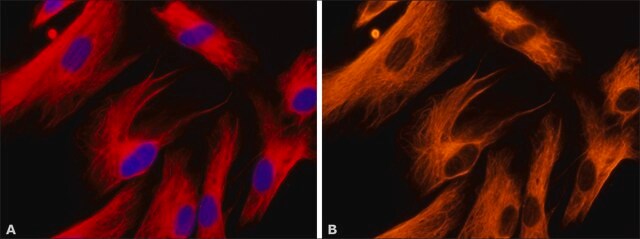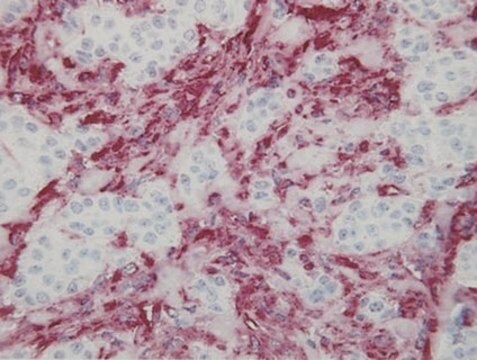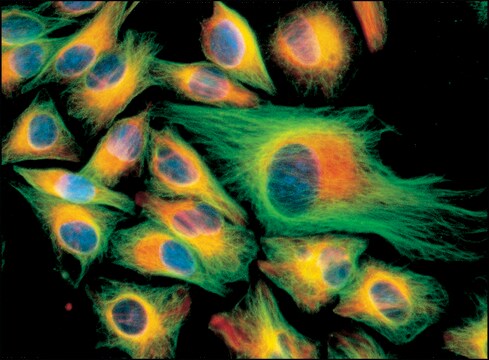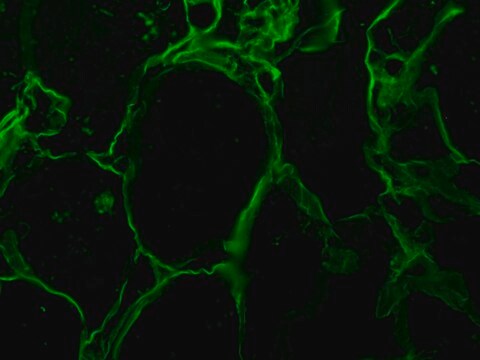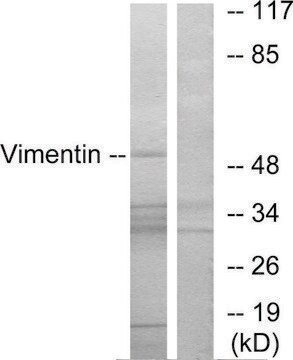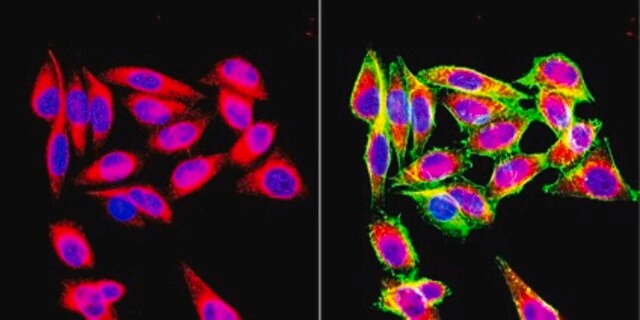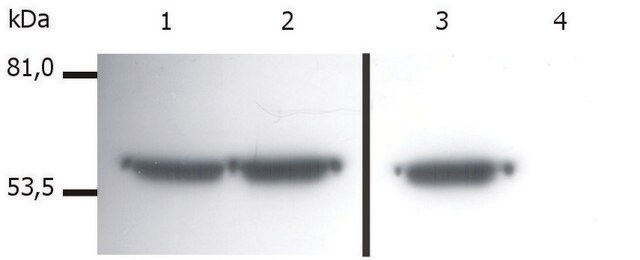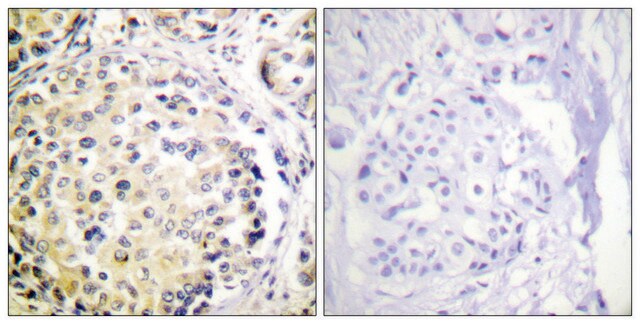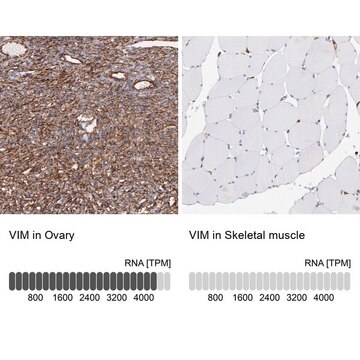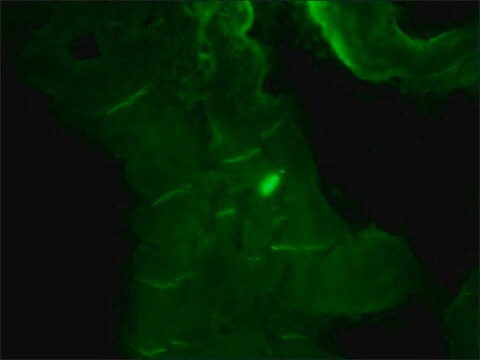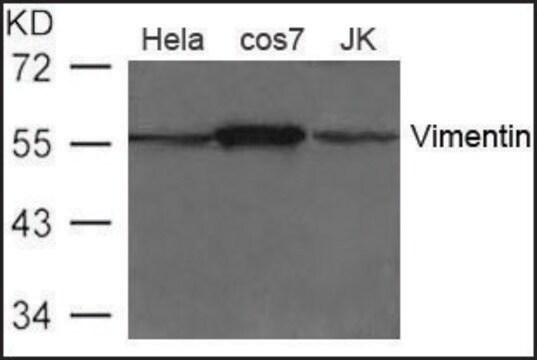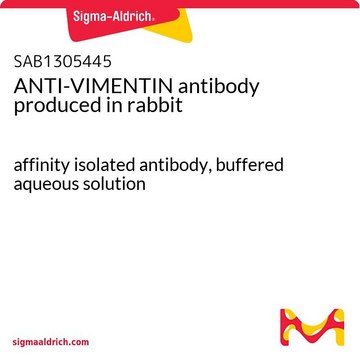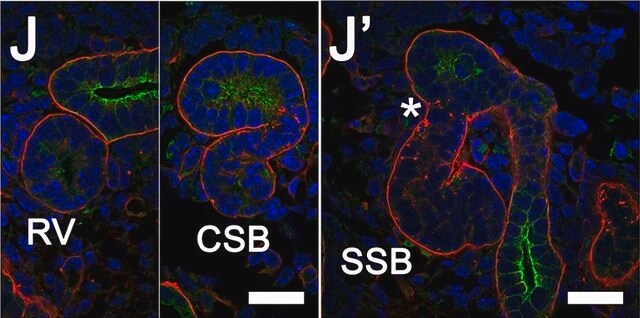V6630
Anti-Vimentin Antibody
mouse monoclonal, V9
Synonyme(s) :
Monoclonal Anti-Vimentin
About This Item
Produits recommandés
Nom du produit
Monoclonal Anti-Vimentin antibody produced in mouse, clone V9, ascites fluid
Source biologique
mouse
Niveau de qualité
Conjugué
unconjugated
Forme d'anticorps
ascites fluid
Type de produit anticorps
primary antibodies
Clone
V9, monoclonal
Poids mol.
antigen ~58 kDa
Contient
15 mM sodium azide
Espèces réactives
pig, canine, feline, hamster, rabbit, gerbil, monkey, bovine, chicken, human, horse, rat
Technique(s)
immunohistochemistry (formalin-fixed, paraffin-embedded sections): 1:40 using human tissue
western blot: 1:200 using human fibroblasts HS-68
Isotype
IgG1
Numéro d'accès UniProt
Conditions d'expédition
dry ice
Température de stockage
−20°C
Modification post-traductionnelle de la cible
unmodified
Informations sur le gène
human ... VIM(7431)
rat ... Vim(81818)
Vous recherchez des produits similaires ? Visite Guide de comparaison des produits
Description générale
Spécificité
Immunogène
Application
- in immunofluorescence Analysis
- in western blot
- anti-vimentin antibody is injected into mature oocytes before embryo manipulations to bind endogenous vimentin (VIM)
- in immunocytochemistry
Actions biochimiques/physiologiques
Stockage et stabilité
Autres remarques
V6389 Anti-Vimentin antibody, Mouse monoclonal
clone V9, purified from hybridoma cell culture
Clause de non-responsabilité
Vous ne trouvez pas le bon produit ?
Essayez notre Outil de sélection de produits.
En option
Produit(s) apparenté(s)
Code de la classe de stockage
12 - Non Combustible Liquids
Classe de danger pour l'eau (WGK)
nwg
Point d'éclair (°F)
Not applicable
Point d'éclair (°C)
Not applicable
Faites votre choix parmi les versions les plus récentes :
Déjà en possession de ce produit ?
Retrouvez la documentation relative aux produits que vous avez récemment achetés dans la Bibliothèque de documents.
Les clients ont également consulté
Articles
High titer lentiviral particles including beta-actin, alpha-tubulin and vimentin used for live cell analysis of cytoskeleton structure proteins.
Notre équipe de scientifiques dispose d'une expérience dans tous les secteurs de la recherche, notamment en sciences de la vie, science des matériaux, synthèse chimique, chromatographie, analyse et dans de nombreux autres domaines..
Contacter notre Service technique
